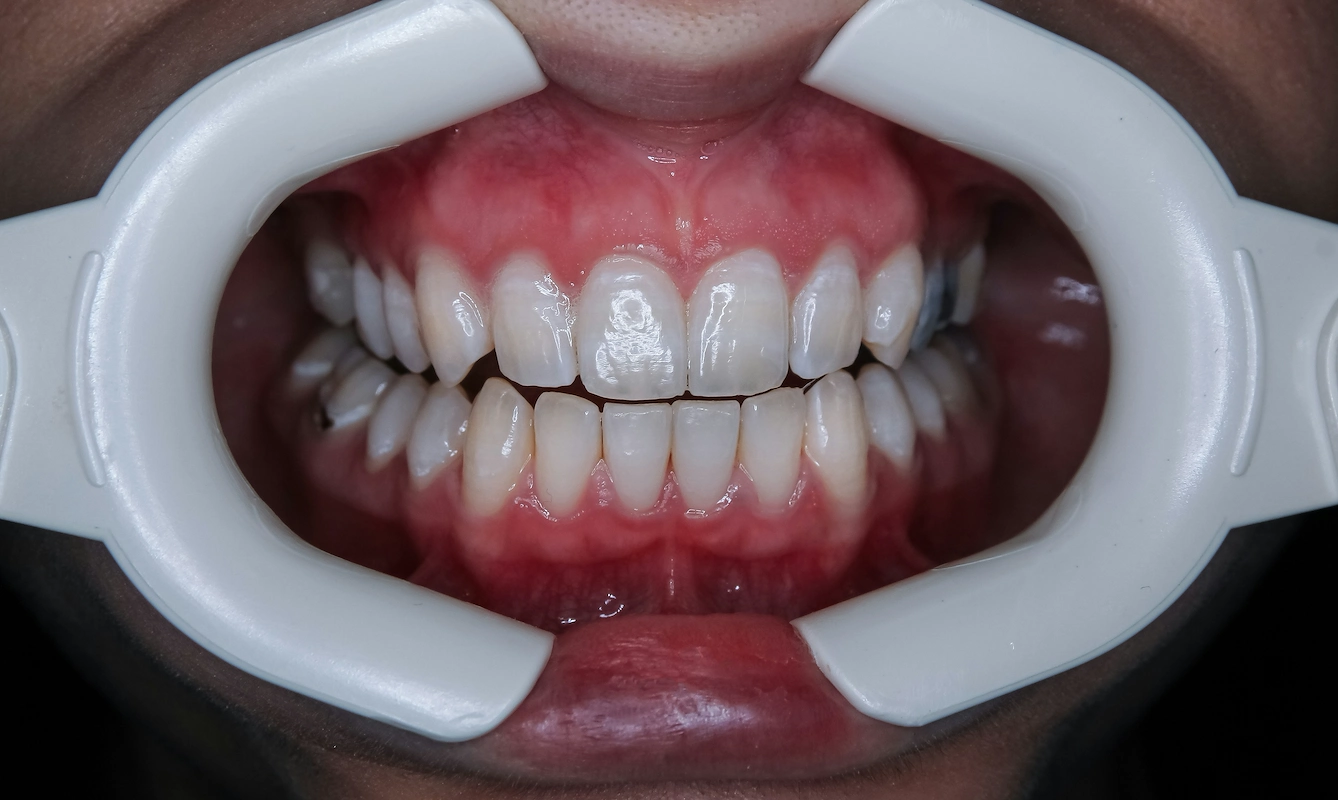Starting a waxing business is a rewarding venture where you combine your passion for esthetics and client care with business savvy. The waxing industry is a multi-billion dollar market, fueled by steady demand from a wide range of clients, including athletes, vacationers, and anyone seeking smooth skin.
This guide will take you through the practical steps of obtaining licenses, selecting a location, acquiring equipment, and securing funding to help you launch a successful waxing business in the U.S.
Step 1: Plan your business and validate your idea
Start by researching your local market. Use U.S. Census Bureau data to understand the demographics in your target zip codes. Also, monitor local social media groups to see what services people request and what they say about existing salons.
Analyze your local competition
Use Google Maps to identify every waxing studio in a five-mile radius. You might want to create a spreadsheet to track their services, pricing, and customer reviews from sites like Yelp. This analysis will reveal gaps in the market you can fill.
Estimate your startup costs
Your initial investment will likely range from $5,000 to $15,000. A common misstep is buying cheap equipment that fails quickly. Invest in professional-grade tools from the start, even if it adjusts your budget. Here is a typical breakdown:
- Licensing and Insurance: $500 - $2,000
- Equipment (table, warmer, cart): $1,500 - $4,000
- Initial Supplies (wax, strips, cleansers): $500 - $1,500
- Rent Deposit and Basic Renovations: $2,000 - $6,000+
- Marketing and Website Setup: $300 - $1,000
Here are 3 immediate steps to take:
- Map all competing waxing salons within your chosen service area.
- Create a spreadsheet comparing the services and prices of your top three competitors.
- Draft a preliminary budget using the cost ranges provided above.
Step 2: Set up your legal structure and get licensed
Choosing a business structure is your first legal step. Most solo estheticians form a Limited Liability Company (LLC). It protects your personal assets if the business is sued and offers simple pass-through taxation. You can file for an LLC through your state's Secretary of State website.
Next, you will need an Employer Identification Number (EIN) from the IRS. It is free to get online and functions like a Social Security number for your business. You need it to open a bank account or hire employees.
State and local requirements
Your primary credential is your state-issued esthetician or cosmetology license. In addition, your physical studio needs its own Salon or Establishment License from your state's Board of Cosmetology. This process involves an application, a fee around $100-$300, and an inspection.
A frequent oversight is signing a lease before checking local rules. Before you commit, confirm the space meets health codes and obtain a Certificate of Occupancy from your city. You will also need a general business license from your local government.
Here are 4 immediate steps to take:
- Decide between an LLC and a sole proprietorship for your business.
- Apply for a free Employer Identification Number (EIN) on the IRS website.
- Download the salon establishment license application from your state's Board of Cosmetology.
- Research your city’s requirements for a business operating license and Certificate of Occupancy.
Step 3: Secure your insurance and manage risk
Protecting your business from day one is non-negotiable. Some new owners only get general liability, but professional liability is what protects you if a client claims your service caused an injury, like a burn or skin reaction. You will want to secure both policies before your first appointment.
Key insurance policies for your studio
Expect to invest between $400 and $1,200 annually for a comprehensive policy. A standard plan should include at least $1 million per occurrence for both general and professional liability. Look into providers like Beauty & Bodywork Insurance (BBI), Hiscox, or The Hartford, as they specialize in the salon industry.
- General Liability Insurance: This covers "slip-and-fall" incidents in your studio.
- Professional Liability Insurance: This protects you from claims related to the services you provide.
- Commercial Property Insurance: This covers your equipment and supplies against theft or damage.
- Workers’ Compensation: This is mandatory in most states if you hire any employees.
Here are 4 immediate steps to take:
- Get quotes for both general and professional liability insurance.
- Compare policies from at least three providers, including one salon specialist.
- Review your lease agreement to confirm you meet its insurance requirements.
- Research your state’s workers' compensation laws if you plan to hire staff.
Step 4: Secure your location and buy equipment
Look for a small commercial space, around 150-300 square feet. This size accommodates a treatment room and a small reception spot. Confirm with the local planning department that the property's zoning permits "personal services" before you engage with a landlord.
When you review a lease, you might want to negotiate a Tenant Improvement (TI) allowance. This can help cover costs for necessary additions, like installing a sink. A frequent misstep is not getting these details in writing, so ensure the lease specifies who covers plumbing modifications.
Stock your treatment room
With your location secured, it is time to purchase equipment. You can open accounts with professional suppliers like SalonCentric or CosmoProf, which require your esthetician license. Here is what your initial setup will include:
- Hydraulic Treatment Table: $500 - $1,500
- Professional Wax Warmer: $100 - $300
- Esthetician Trolley/Cart: $150 - $400
- Magnifying Lamp: $100 - $250
Here are 4 immediate steps to take:
- Research commercial spaces zoned for personal services in your target area.
- Ask potential landlords about a Tenant Improvement (TI) allowance for plumbing.
- Create a professional account with a supplier like SalonCentric or CosmoProf.
- Price out a hydraulic treatment table and a professional-grade wax warmer.
Step 5: Set up your finances and payment systems
Payment processing
Most clients will pay per service with a credit or debit card. You might want to require a small deposit for new client bookings to reduce no-shows. This can often be managed directly through your booking software, which automates the process.
When choosing a payment processor, look for low transaction fees and no long-term contracts. A common mistake is getting locked into plans with expensive hardware you do not need. Average commission rates from other providers often range from 2.5% to 3.5% plus monthly fees.
For waxing businesses that need to accept payments on-site or on-the-go, JIM offers a streamlined solution. With JIM, you can accept debit, credit, and digital wallets directly through your smartphone—just tap and done. There is no need for a separate card reader.
At just 1.99% per transaction with no hidden costs, it is particularly useful for solo estheticians or those offering mobile services. This rate is significantly lower than the industry average, which helps you keep more of your earnings from every appointment.
- Get Started: Download the JIM app for iOS.
- Make a Sale: Type the sales amount, hit sell, and ask your customer to tap their card or device on your phone.
- Access Funds: Your money is available right on your JIM card as soon as the sale is done—no waiting for bank transfers.
Here are 3 immediate steps to take:
- Decide on a deposit policy for new client bookings.
- Compare the transaction fees of two payment processors with JIM's 1.99% rate.
- Download the JIM app to explore its interface.
Step 6: Fund your business and manage finances
For a small studio, an SBA Microloan is often a great fit. These loans go up to $50,000, but most new estheticians secure around $13,000. This amount is perfect for initial equipment and your first rent payment. Interest rates usually fall between 8% and 13%.
You might also look for grants. The Amber Grant for Women is a popular choice in the beauty industry, awarding $10,000 monthly to a female entrepreneur. Unlike a loan, you do not have to repay a grant.
Plan your working capital
A frequent oversight is focusing only on one-time startup costs. You should have at least $3,000 to $5,000 set aside as working capital. This buffer covers rent, supply restocks, and marketing for the first six months while you build your client base.
Once you have funds, open a separate business bank account immediately. This keeps your personal and business finances distinct, which makes tax time much simpler and protects your personal assets if you have an LLC.
Here are 4 immediate steps to take:
- Research SBA Microloan lenders in your state.
- Explore the application requirements for the Amber Grant.
- Calculate your working capital needs for the first six months.
- Open a dedicated business bank account to separate your finances.
Step 7: Hire your team and set up operations
Staffing your studio
When you hire your first esthetician, confirm they hold a current state license. Pay typically ranges from $20 to $30 per hour, plus tips and a 10-15% commission on retail product sales. Their duties will include services, client consultations, and maintaining sanitation standards.
One thing to get right from the start is how you classify your staff. Many new owners mistakenly hire estheticians as 1099 independent contractors to avoid payroll taxes. This can lead to significant IRS penalties if the worker is deemed a W-2 employee, so research your state's specific guidelines.
Streamline your daily operations
You will want to use salon management software to handle appointments and payments. Systems like Vagaro or Square Appointments let clients book online, send automated reminders to reduce no-shows, and securely store client notes. Most offer a free trial period.
As a benchmark, a full-time esthetician should generate about 2.5 to 3 times their salary in service revenue to be profitable. This metric helps you decide when it is financially sound to expand your team beyond just yourself.
Here are 4 immediate steps to take:
- Draft a job description for a Licensed Esthetician, including the pay structure.
- Research your state’s legal test for classifying a worker as an employee versus a contractor.
- Compare the features and pricing of Vagaro and Square Appointments.
- Calculate the weekly revenue a new hire must generate to meet the 2.5x profitability rule.
Step 8: Market your business and get clients
Your first move should be to claim and optimize your Google Business Profile. This ensures you appear in local map searches. Also, create an Instagram account dedicated to your studio. Post high-quality photos of your space and, with permission, before-and-after results.
You might want to partner with nearby businesses that share your clientele. Think bridal shops, gyms, or spray tan salons. You could offer a small, mutual discount or co-host a local event to cross-promote your services and reach new customers.
Measure your marketing success
Ask every new client, "How did you hear about us?" and track the answers. This helps you calculate your Customer Acquisition Cost (CAC). For a new waxing studio, a CAC between $50 and $100 is a reasonable target to aim for.
Many new owners are tempted to offer deep discounts, but this can devalue your brand. A better approach is to provide a "welcome" offer, like $10 off their second visit. This builds loyalty without making your services seem cheap.
Here are 4 immediate steps to take:
- Set up and fully complete your Google Business Profile.
- Plan your first three Instagram posts, including a before-and-after shot.
- Identify two local businesses to approach for a partnership.
- Create a "welcome" offer for new clients instead of a steep discount.
Step 9: Set your prices and create a service menu
Determine your pricing strategy
Your pricing should cover supply costs, time, and overhead, with a target profit margin of 70-80% on services. To figure this out, add up the cost of all disposables for one service—like wax and strips—to find your cost-per-service.
A frequent mistake is to underprice just to attract clients. Instead, set your prices based on your skill and the local market rate. For example, if a Brazilian wax costs you $8 in supplies, a price of $60-$75 is a competitive starting point in most areas.
Build your service menu
Start with a focused menu of your most popular services, priced a la carte. Once you have that, you can create packages, like a "Buy 5, Get 1 Free" series for regulars. You might also offer service bundles, such as a "Full Leg + Bikini" combo at a slight discount.
For high-frequency services, a simple membership can create predictable revenue. For instance, a monthly fee of $40 could include two brow waxes. This helps build a loyal client base that returns consistently.
Here are 4 immediate steps to take:
- Calculate your cost-per-service for your top three treatments.
- Research the prices of three local competitors for those same services.
- Draft your a la carte service menu with finalized prices.
- Create one service bundle or package to encourage repeat business.
Step 10: Maintain quality and scale your studio
Your reputation depends on consistent, high-quality service. You should define your standards for every treatment. This includes specific sanitation protocols, client comfort checks during the service, and ensuring at least 95% of hair is removed with minimal skin irritation.
To measure quality, track your client retention rate. A good target is to have 60-70% of new clients return for a second appointment. Also, monitor your online reviews on Google and Yelp, aiming for an average rating of 4.5 stars or higher.
When to expand your business
You might be tempted to hire help after one busy month, but it is better to wait for sustained demand. A solid benchmark for hiring your first esthetician is when you are personally booked at 80% capacity for three straight months.
Once your team is consistently at 80% capacity, it is time to think about a bigger space or a second location. Another indicator is when your weekly waitlist regularly has more than 10 clients. This shows your revenue potential is capped by your physical space.
Your salon management software, like Vagaro or Square, is perfect for this. Use its reporting features to track booking percentages, client retention, and individual staff performance. These numbers give you the data you need to make smart growth decisions.
Here are 4 immediate steps to take:
- Document your quality standard for your most popular service.
- Calculate your client retention rate from the last three months.
- Set up a report in your salon software to track your booking capacity percentage.
- Determine the monthly revenue figure that would justify hiring your first employee.
Starting your waxing studio is about more than just technique. Your success depends on the client experience you create from the moment they book. Focus on that personal touch. You have the roadmap, now go build your business.
As you set up, make payments simple. JIM turns your phone into a card reader, so you can accept payments anywhere with a flat 1.99% fee and no extra hardware. Download JIM to get started.















